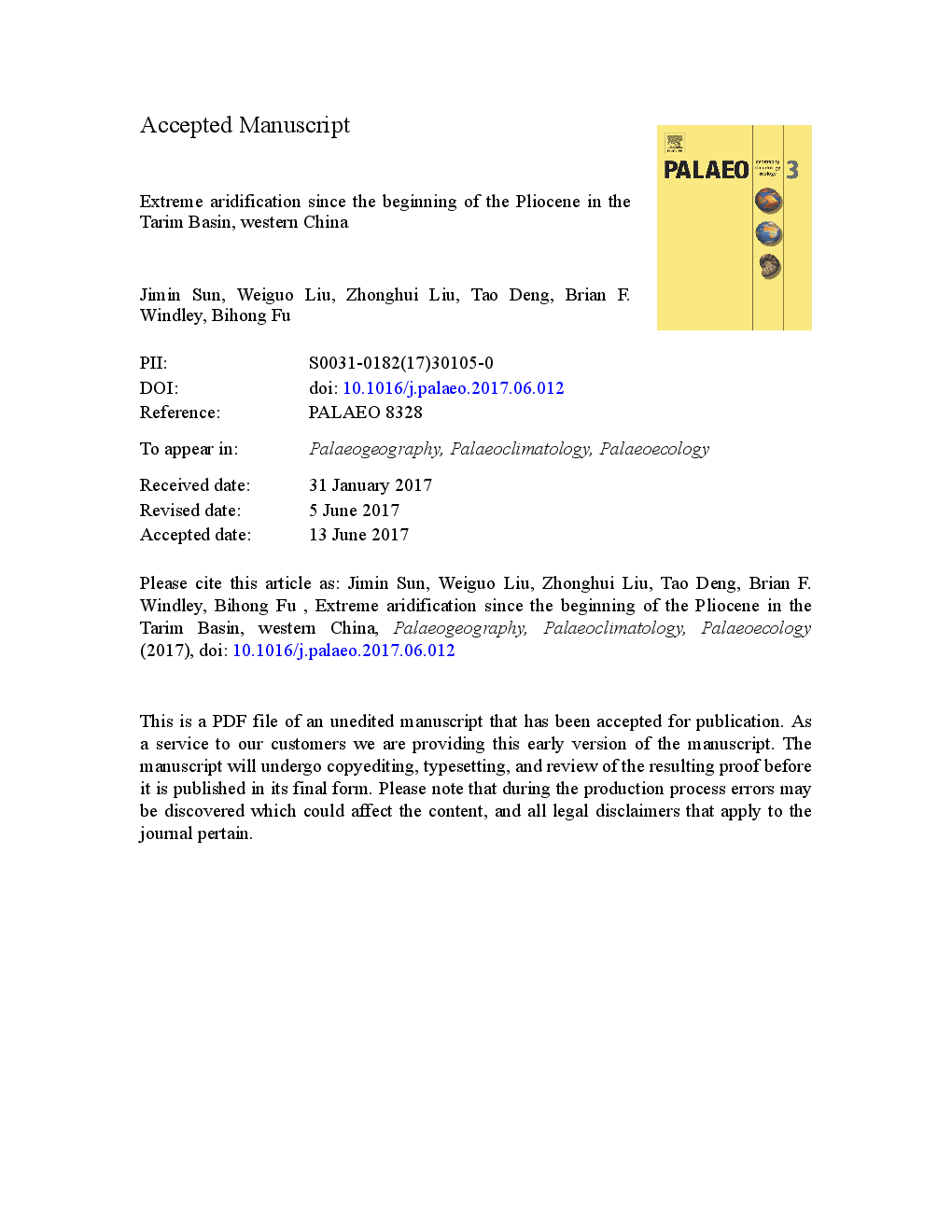ترجمه فارسی عنوان مقاله
از زمان آغاز پلیوسن در حوضه تاریم، غرب چین، آلودگی شدید
عنوان انگلیسی
Extreme aridification since the beginning of the Pliocene in the Tarim Basin, western China
| کد مقاله | سال انتشار | تعداد صفحات مقاله انگلیسی |
|---|---|---|
| 149567 | 2017 | 54 صفحه PDF |
منبع

Publisher : Elsevier - Science Direct (الزویر - ساینس دایرکت)
Journal : Palaeogeography, Palaeoclimatology, Palaeoecology, Volume 485, 1 November 2017, Pages 189-200

